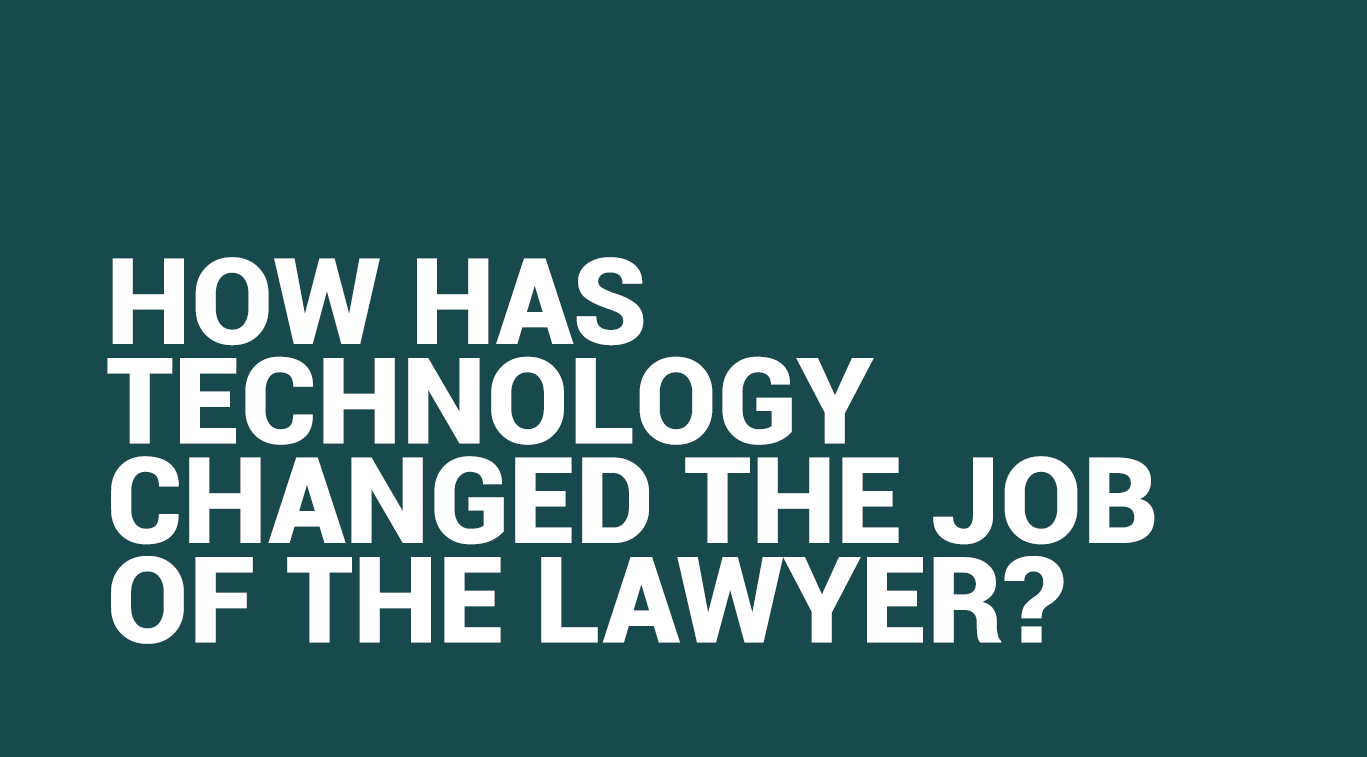The Future of Law Firms Post-Pandemic

Written by Shrisha Sapkota
Blogger

As the world grappled with the impact of the pandemic, technology and profitability took centre stage in the legal industry[1], and as a way to ensure business continuity, maintain profitability and enable remote productivity, firms were forced to make fast decisions to enable anytime, anywhere access to critical systems, and look to accelerating process improvements for better efficiency[2]. Many of the trends that have been taking place in recent years were granted the fast pass, as virtual work and client collaboration became critical to continuing operations[3]. The current transition and societal shift are formative for existing trends, but also trigger the emergence of new trends. Management consultant, Peter Drucker, once said “The greatest danger in times of turbulence is not the turbulence , it is to act with yesterday’s logic.[4]”
However, for law firms with their inability to respond fast; their limited digital resilience is causing serious problems[5]. Digital channels have suddenly become the only way to reach customers, the need for a digital ramp-up becomes obvious and vital[6]. In this blog, we’ll analyse what the future of law firms will look like, after the pandemic.
The global financial crisis and its reboot of the buy-sell dynamic of goods and services; globalisation; astonishing advances in technology; and digital transformation have convinced legal buyers that legal practice is no longer synonymous with the delivery of legal services[7]. The legal industry is fragmented, growing, has a huge untapped market for its services, and is ripe for digital transformation[8]. A growing number of corporate legal departments and customer-centric providers with corporate structures, economic models that reward output (results) rather than the input (hours billed) are reshaping legal delivery[9].
Moreover, tech-savvy clients are increasingly demanding more effective and efficient services which are usually delivered through legal tech. The legal buyers are driving change and have disaggregated legal practice from the delivery of legal services; and the lawyer-centric, labour-intensive, fragment-led legal industry is ripe for tech and process-driven consolidation. Technology is impacting the legal industry in many ways: narrowing ‘practice’ and expanding ‘business of law’ (legal operations); creating new business models; accelerating the ‘corporatization’ of legal delivery (corporate models replacing the law firm partnership as the dominant structure); infusing capital; replacing stasis with innovation; producing a new buy/sell dynamic; and rebooting customer expectations of how, from whom, and at what price legal services are bought and sold[10].
More use of technology
The pandemic has created new needs and challenges. Questions such as how are legal professionals meant to work together when they can’t work in the same physical space or how are law firms and legal departments meant to suddenly address the influx of work sparked by broken supply chains, frustrated contracts and a wave of resulting litigation have been arising[11]. At the same time, legal technology has become advanced enough to address these needs and challenges, pushing legal organisations to explore options they might not otherwise have considered and it doesn’t take a fortune teller to see that this transition will have long-term consequences[12]. Technology such as multitool platforms are also on the horizon; acquisitions are happening and investments are being made in legal tech, by traditionally non-legal tech companies which means you’ll use different platforms through a single solution, saving valuable time and helping your IT teams sleep more easily[13].
Today, the legal organisations that stand out from the crowd are those that have already committed to adopting technology into their workflow[14]. But as more organisations see how technology adoption becomes the norm, the conversation will shift from focusing on how technology can support the legal industry to what technology does so in the best way[15]. Rather than take a shotgun approach to legal tech, law firms and legal departments will need to focus on the precise, cost-effective solutions that provide the greatest impact[16].
Out of legal tech’s many potential applications, one of the most impactful will be those that increase value by offering a quality service and reducing costs for the client (for law firms) or internal stakeholders (for legal departments). Good law software, for example, is a multiplatform technology, that integrates everything from a case management system, document management system, legal timekeeping and billing software, legal cloud solutions, legal data analytics, legal crm systems etc.
Technology investments will drive competitiveness
For legal departments, this sudden increase in capacity and use of technology could prove to be revolutionary[17]. In-house counsels that once were forced to reactively support their organisations as legal issues appeared may find they have the time and resources to become more strategic[18].
The advances in technology means that law firms and legal departments will be able to take on more work and deliver results faster which implies that the future will be even more competitive unless the demand for legal services increases commensurately[19]. That’s why it’s crucial that law firms begin adopting technology and refining its use in their practice today if they succeed, they’ll be better positioned to take on a greater caseload than ever before and firms that don’t get ahead of the curve will be left with the cases those better-positioned firms choose to let go[20].
The competitive landscape is changing, and lawyers will need to rethink the way they deliver legal services in order to create a sustainable, profitable practice in the coming years[21]. In 2022, law firms will rethink their cost structures and reduce fixed costs and invest in technology to increase efficiency, reduce costs and mitigate risk will be more successful[22].
In 2021, many of the industry predictions slated to arrive in 2025 or 2030 will come to fruition as the global pandemic dramatically accelerates the timeline for overall legal industry transformation. Creative service delivery and partnering models unlocking additional value will emerge, available legal talent will be leveraged without regard to geographic location, and legal processes will be fine-tuned with an eye toward the implementation of cutting-edge technology in the not-too-distant future. And, bonus prediction, legal professionals will experience Zoom/Teams fatigue and revert to the “old-fashioned” method of connecting audio only on 5G-enabled smartphones.
A Swedish analytics company performed a study in 2019 based on data from 3578 Danish and Swedish lawyers, which showed that lawyers believe that increased demand for work-life balance (61%) will have the most evident effect on the legal sector, followed by legal tech (60%)[23]. Another strong change driver is increased societal complexity and a growing need for legal services (53%)[24].
Use of Artificial Intelligence
Artificial Intelligence, for example, is likely to be deployed in intelligent search through document sets to prepare for litigation, identify contracts that have become riskier due to current events (e.g., the LIBOR transition) or otherwise surface relevant data to legal professionals for closer review[25].
So far, the use of Artificial Intelligence in law firms as a method for smart search in document sets or for contract management — are valuable, but they don’t represent its full potential[26]. As AI technology matures and legal organisations warm to its use, the use of predictive analytics will become more commonplace[27]. By ingesting relevant case law, Artificial Intelligence can predict the likely outcome of a novel legal matter, helping to inform law firms’ and legal departments’ strategy. For example, Michigan State University researchers successfully predicted the outcomes of all Supreme Court cases ranging from 1816 to 2015 with 70 percent accuracy,[28] and the University College London researchers predicted 79 percent of the outcomes of cases tried by the European Court of Human Rights[29].
Remote work
After the outbreak of the pandemic, the way that businesses or firms operate have changed a lot. Business travel has been cancelled and working from home has reached its heights. By June of last year, 42% of the U.S. labour force, largely from the ranks of white-collar employees and professionals, were working from home, many shutting their apartments and logging in from cheaper or more serene locations. In 2018, 23% of customers said that they’re more likely to hire a firm if it offers remote communication options, whereas in 2019, 79% said that they preferred remote communication options.
Attorneys accustomed to client interactions and in-person litigation now see their days filled with email communications and Zoom meetings[30]. For many attorneys, networking events provided a crucial lifeline to client referrals[31]. With the pandemic, networking went virtual, making it much harder to mingle and create meaningful professional ties[32]. The lack of human connection has made what was oftentimes an already solitary profession into one that is more isolated, even lonely[33]. The COVID-19 pandemic heightened this issue and brought to light how the imbalance in a lawyer’s work-life plays on their mental health and overall wellbeing[34]. With more legal professionals working remotely, it’s harder than ever to create boundaries, and burnout is at an all-time high[35]. New stressors brought on by the pandemic such as isolation due to working remotely, home child care and learning, disconnection from family members, or even deaths from the pandemic have thrown new curveballs for lawyers to deal with on top of their work[36].
Resources
[1] https://www.aderant.com/think-tank/21-legal-tech-and-business-of-law-predictions-for-2021/
[2] https://www.aderant.com/think-tank/21-legal-tech-and-business-of-law-predictions-for-2021/
[3] https://www.aderant.com/think-tank/21-legal-tech-and-business-of-law-predictions-for-2021/
[4] https://www.aderant.com/think-tank/21-legal-tech-and-business-of-law-predictions-for-2021/
[5]https://www2.deloitte.com/content/dam/Deloitte/de/Documents/covid-19-induced-business-trends-deloitte-whitepaper.pdf
[6]https://www2.deloitte.com/content/dam/Deloitte/de/Documents/covid-19-induced-business-trends-deloitte-whitepaper.pdf
[7]https://www.forbes.com/sites/markcohen1/2019/10/07/big-money-is-betting-on-legal-industry-transformation/?sh=5acd57af5ce2
[8]https://www.forbes.com/sites/markcohen1/2018/12/20/law-is-lagging-digital-transformation-why-it-matters/#57851c63515c
[9]https://www.forbes.com/sites/markcohen1/2019/10/07/big-money-is-betting-on-legal-industry-transformation/?sh=5acd57af5ce2
[10] https://www.legalmosaic.com/global-legal-tech-is-transforming-service-delivery/
[11] https://www.exigent-group.com/blog/5-legal-technology-trends-to-watch-in-a-post-covid-world/
[12] https://www.exigent-group.com/blog/5-legal-technology-trends-to-watch-in-a-post-covid-world/
[13] https://www.exigent-group.com/blog/the-art-of-navigating-tomorrows-disruption/
[14] https://www.exigent-group.com/blog/5-legal-technology-trends-to-watch-in-a-post-covid-world/
[15] https://www.exigent-group.com/blog/5-legal-technology-trends-to-watch-in-a-post-covid-world/
[16] https://www.exigent-group.com/blog/5-legal-technology-trends-to-watch-in-a-post-covid-world/
[17] https://www.exigent-group.com/blog/5-legal-technology-trends-to-watch-in-a-post-covid-world/
[18] https://www.exigent-group.com/blog/5-legal-technology-trends-to-watch-in-a-post-covid-world/
[19] https://www.exigent-group.com/blog/5-legal-technology-trends-to-watch-in-a-post-covid-world/
[20] https://www.exigent-group.com/blog/5-legal-technology-trends-to-watch-in-a-post-covid-world/
[21] https://www.aderant.com/think-tank/21-legal-tech-and-business-of-law-predictions-for-2021/
[22] https://www.aderant.com/think-tank/21-legal-tech-and-business-of-law-predictions-for-2021/
[23] https://www.lexnordics.com/news/6-legal-trends-to-watch-2020-2021
[24] https://www.lexnordics.com/news/6-legal-trends-to-watch-2020-2021
[25] https://www.exigent-group.com/blog/5-legal-technology-trends-to-watch-in-a-post-covid-world/
[26] https://www.exigent-group.com/blog/5-legal-technology-trends-to-watch-in-a-post-covid-world/
[27] https://www.exigent-group.com/blog/5-legal-technology-trends-to-watch-in-a-post-covid-world/
[28] https://journals.plos.org/plosone/article?id=10.1371/journal.pone.0174698
[29] https://peerj.com/articles/cs-93/
[30] https://attorneyatlawmagazine.com/attorney-burnout-is-on-the-rise-what-can-you-do-about-it
[31] https://attorneyatlawmagazine.com/attorney-burnout-is-on-the-rise-what-can-you-do-about-it
[32] https://attorneyatlawmagazine.com/attorney-burnout-is-on-the-rise-what-can-you-do-about-it
[33] https://attorneyatlawmagazine.com/attorney-burnout-is-on-the-rise-what-can-you-do-about-it
[34] https://www.natlawreview.com/article/why-lawyer-burnout-still-issue-2021
[35] https://www.natlawreview.com/article/why-lawyer-burnout-still-issue-2021
[36] https://www.natlawreview.com/article/why-lawyer-burnout-still-issue-2021








